
Multiplication Word Problems: Multiplication word problems help us learn how to use multiplication in real life. These problems tell short stories where we have to find the answer by multiplying numbers. For example, if one box has 5 apples and there are 3 boxes, we can multiply 5 × 3 to find out there are 15 apples in total. Solving these word problems helps us get better at math and understand how multiplication is useful every day.
Multiplication Word Problems Overview
Multiplication word problems are short stories that use multiplication to find the answer. These problems help children understand how to multiply numbers in real-life situations, like counting toys, fruits, or groups of people. By reading and solving these problems, kids learn to think clearly, spot key information, and use multiplication to solve everyday questions. It’s a fun way to practice math and build problem-solving skills.
Read More: 2 to 30 Tables
Multiplication Word Problems for Class 1 to 5
Here are multiplication word problems for Class 1 to 5 along with their solutions:Solution: Total crayons = 4 × 6 = 24 crayons.
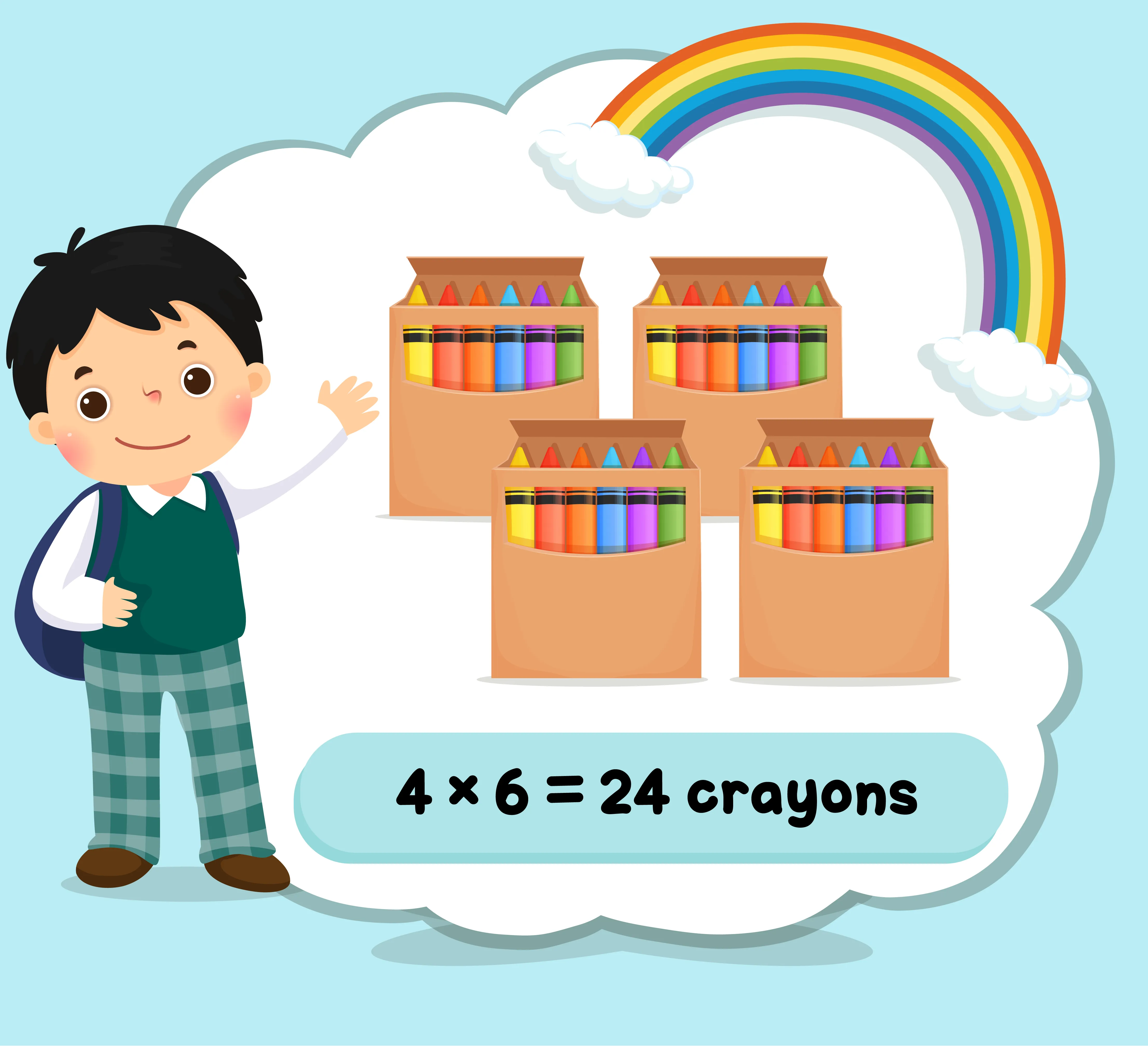
Solution: Total chairs = 5 × 8 = 40 chairs.
3. Problem: A box contains 7 apples. If there are 9 boxes, how many apples are there in total?Solution: Total apples = 7 × 9 = 63 apples.
 4. Problem: A baker bakes 12 loaves of bread every day. How many loaves does he bake in 7 days?
4. Problem: A baker bakes 12 loaves of bread every day. How many loaves does he bake in 7 days?
Solution: Total loaves = 12 × 7 = 84 loaves.
5. Problem: Each packet contains 5 marbles. If there are 15 packets, how many marbles are there?Solution: Total marbles = 5 × 15 = 75 marbles.
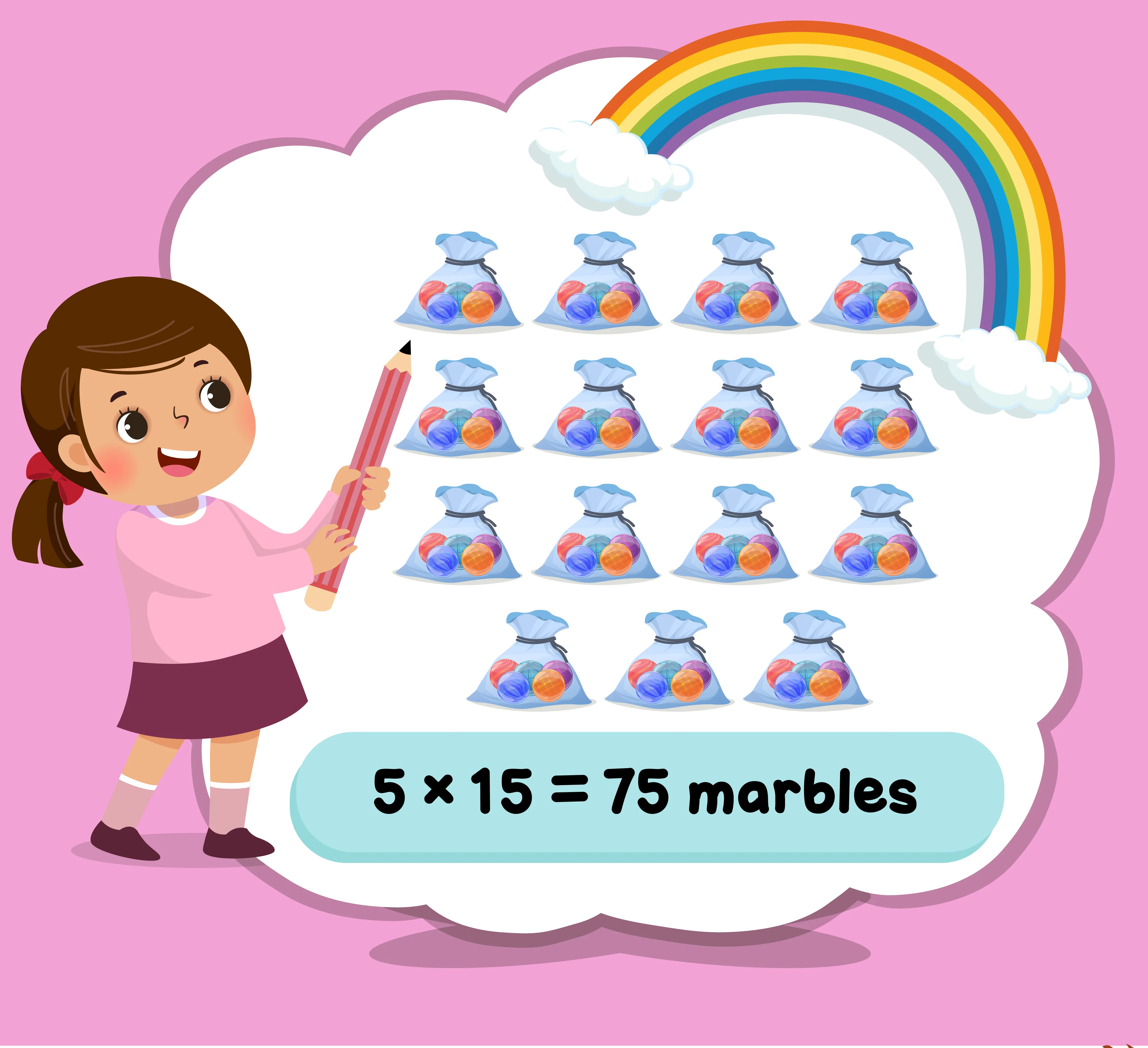
Solution: Total oranges = 6 × 8 = 48 oranges.
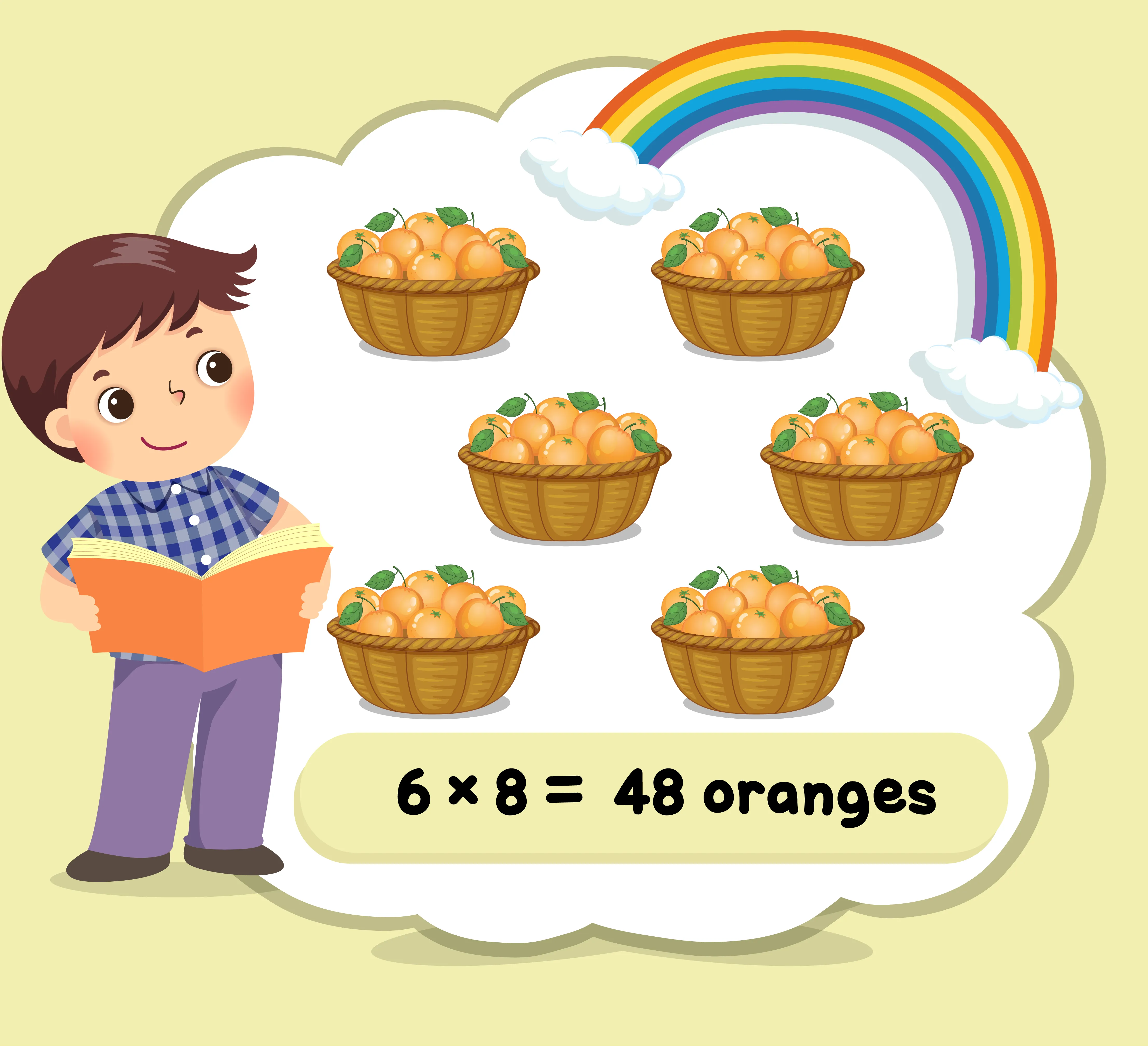
Solution: Total books = 3 × 20 = 60 books.
8. Problem: There are 11 flowers in each pot. If there are 7 pots, how many flowers are there in total?Solution: Total flowers = 11 × 7 = 77 flowers.
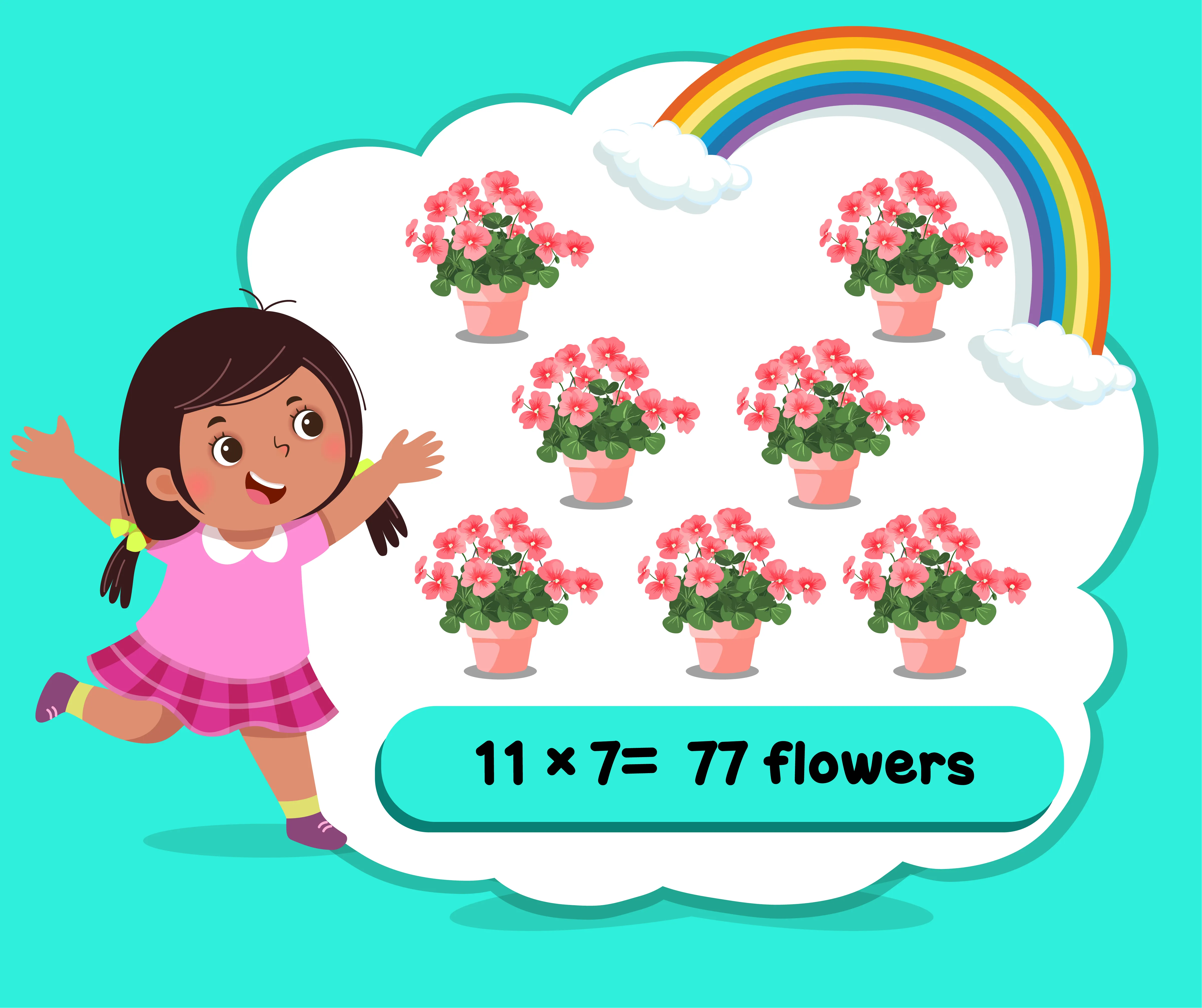
Solution: Total packs = 5 × 30 = 150 packs.
10. Problem: A farmer plants 4 rows of corn. Each row has 13 corn plants. How many corn plants are there in total?Solution: Total plants = 4 × 13 = 52 corn plants.
Read More: Basic Maths Questions for Kids
11. Problem: A bus carries 28 passengers. If there are 9 buses, how many passengers are there in total?Solution: Total passengers = 28 × 9 = 252 passengers.
12. Problem: An artist paints 6 pictures every week. How many pictures will she paint in 5 weeks?Solution: Total pictures = 6 × 5 = 30 pictures.
13. Problem: A box contains 10 packets of biscuits. Each packet has 12 biscuits. How many biscuits are there in the box?Solution: Total biscuits = 10 × 12 = 120 biscuits.
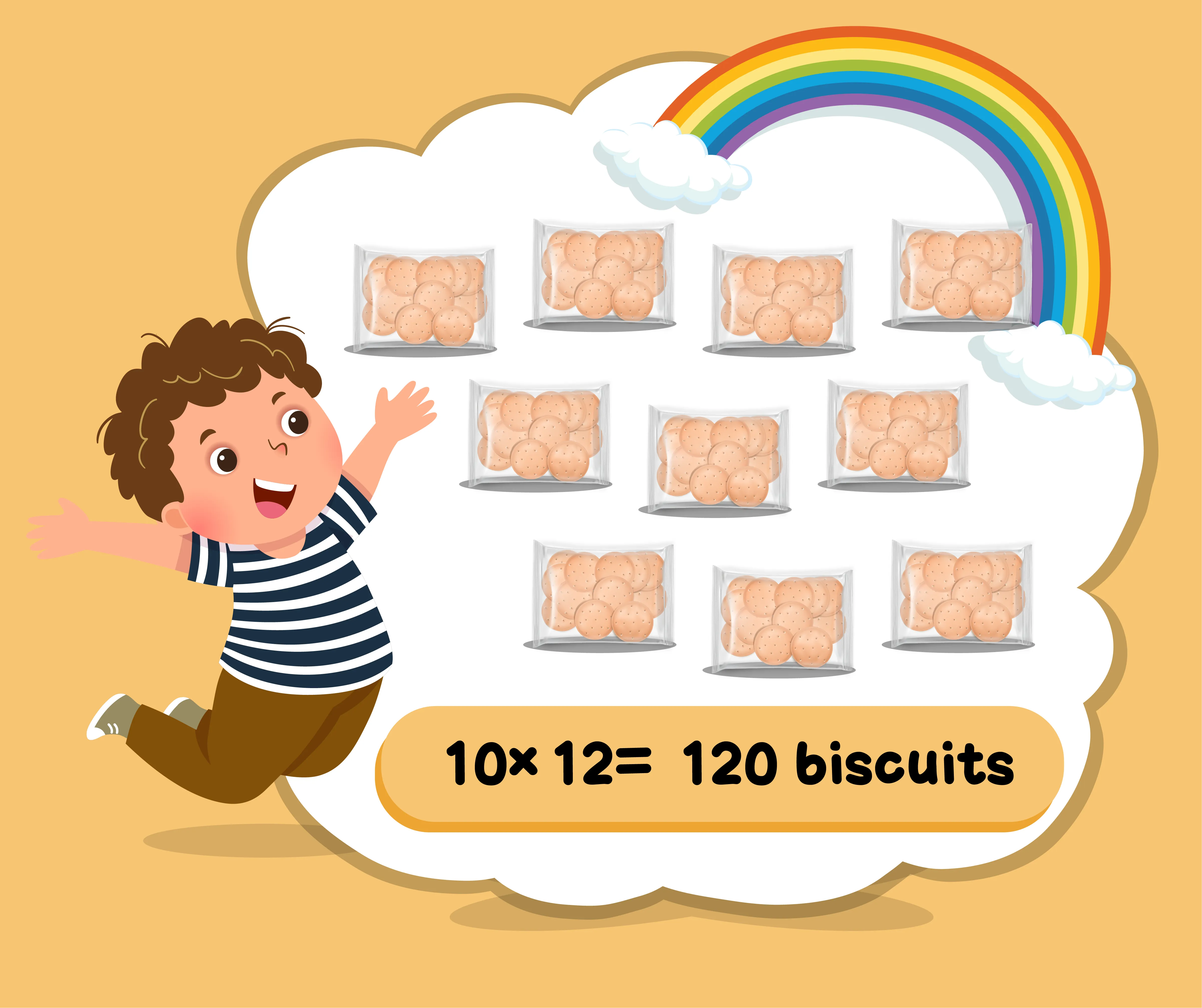
Solution: Length of the field = 50 × 6 = 300 meters.
15. Problem: A shop sells 8 toys every hour. How many toys does the shop sell in 24 hours?Solution: Total toys = 8 × 24 = 192 toys.
16. Problem: Each bag holds 9 pencils. If there are 14 bags, how many pencils are there in total?Solution: Total pencils = 9 × 14 = 126 pencils.
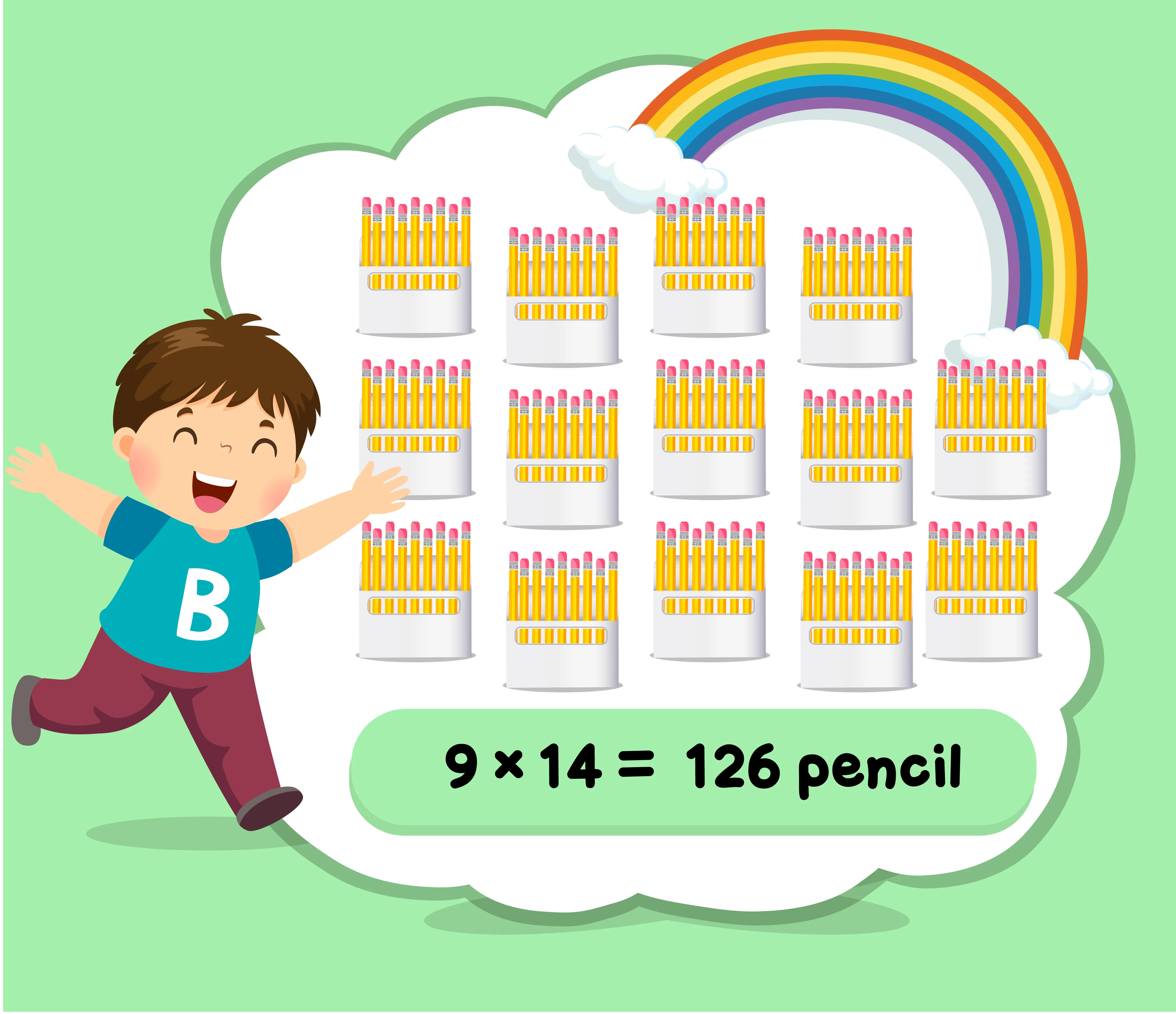
Solution: Distance = 60 × 5 = 300 kilometers.
18. Problem: There are 15 students in each row of seats. If there are 8 rows, how many students are there in total?Solution: Total students = 15 × 8 = 120 students.
19. Problem: A school has 12 classes. Each class has 30 students. How many students are there in total?Solution: Total students = 12 × 30 = 360 students.
20. Problem: There are 4 shelves in a library. Each shelf holds 25 books. How many books are there in total?Solution: Total books = 4 × 25 = 100 books.
Tips and Tricks to Solve Multiplication Word Problems
Here are some tips and tricks to help solve multiplication word problems effectively: 1. Read the Problem Carefully:- Understand the question : Read the problem slowly and make sure you understand what is being asked before jumping to any calculations.
- Identify key information : Look for numbers, units and what you are required to find.
- Words like “each,” “every,” “total,” “in all,” “group,” or “combined” often indicate multiplication. These keywords help identify the operation required.
- Divide the problem into smaller steps : If the problem involves multiple actions, break them into steps. For example, "First, find the number of books in one box, then multiply by the number of boxes."
- Visualize the problem : Sometimes drawing a simple picture or diagram can help you understand how the numbers relate to each other.
- For example, if a problem involves rows and columns, drawing them out can give you a clearer understanding.
5. Use Arrays for Visualization:
- Arrangements in rows and columns can help you see the multiplication more clearly. For example, if the problem involves 4 groups of 6 items, drawing 4 rows with 6 items in each row can show you the multiplication process.
- Estimate the answer first : Before multiplying, round the numbers to make a rough estimate of what the answer should be. This helps in checking if your final answer is reasonable.
- Be careful with units : Always check the units involved. If the problem involves money, distance, or time, ensure that you're multiplying and adding the correct units (e.g., dollars, kilometers, hours).
- Multiplication is commutative : Remember that the order of numbers doesn’t matter. For example, 5 × 6 is the same as 6 × 5, so you can rearrange the numbers to make the problem easier to solve.
- Break down larger numbers : For large numbers, break them into smaller factors to simplify the multiplication. For example, if you need to multiply 25 × 4, break it down as (20 + 5) × 4 = (20 × 4) + (5 × 4).
- Relate word problems to everyday life : Think about situations like buying multiple items in a store, calculating distances, or distributing things equally, to help reinforce the multiplication concept.
- Review your steps : After getting an answer, go back through the problem to check your multiplication and ensure no information was missed or misinterpreted.
Read More: Whole Numbers
Multiplication Word Problems PDF
The PDF containing Multiplication Word Problems is available below for easy download and access. By solving these problems, learners will develop a deeper understanding of multiplication concepts, enhance their problem-solving abilities and gain more confidence in their math skills. Simply click the link below to download the PDF and start practicing. Join Kids Online Classes Now !!
Do you need help with your homework or preparing for exams?
Study without using the internet
Multiplication Word Problems FAQs
What are multiplication word problems?
How do I identify multiplication in word problems?
What should I do if the problem is complicated?
How can I make multiplication easier in word problems?









